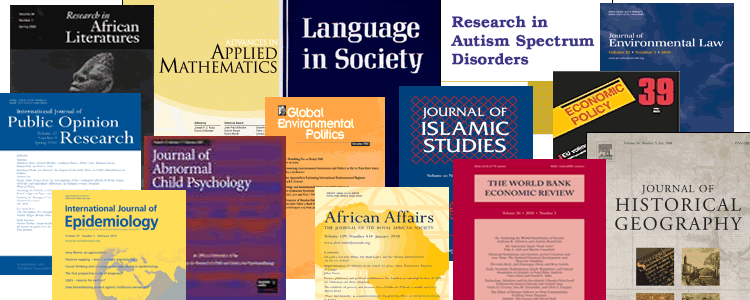
Journals are a scholarly type of serial (or periodical): something we subscribe to, rather than buying once. There are other types of serials: popular magazines, newspapers, and trade publications.
The following chart outlines the differences between types of serials.
|
Journals:
|
Popular magazines
|
|
Newspapers
|
Trade Publications
|
Scholarly Journals
It's usually easy to tell a newspaper or trade publication from a journal. Sometimes it's also clear when a magazine is popular (eg. fashion or gossip magazines). But there are times when it's hard to decide if a journal is truly scholarly, because popular magazines can still be educational and informative.
Is it always wrong to use a non-scholarly journal?
- No. Sometimes there are excellent reasons for using popular magazines, newspapers, or trade publications, and they may be interesting additions to your research.
- But it's important that you know when you are choosing a scholarly journal and when you are not. If your research requires scholarly journals, know how to recognize them.
If it's in a scholarly journal, does that automatically make it a scholarly article?
- No. Scholarly journals may also include letters and book reviews that are not peer-reviewed. Read these as personal opinion pieces.
Follow these links to learn the criteria for assessing whether a journal is scholarly.
Consider the following parts:
In the end, use your judgement to assess whether a journal is scholarly or not. Use the above criteria to help you decide, but a journal doesn't necessarily need to meet ALL the criteria to be considered scholarly. It may depend on the discipline or your topic/purpose. If in doubt, ask your professor or a librarian for an opinion.
Practice
Have you read about the four parts of a journal to consider - Title, Cover, Publisher, Peer-Review Process?
Now try a some examples, and see if you can identify which ones are scholarly. When you're done, you'll end up back here.
This completes the section on scholarly journals. Return to the scholarly resources page or proceed to the next section, on Author Credentials.



